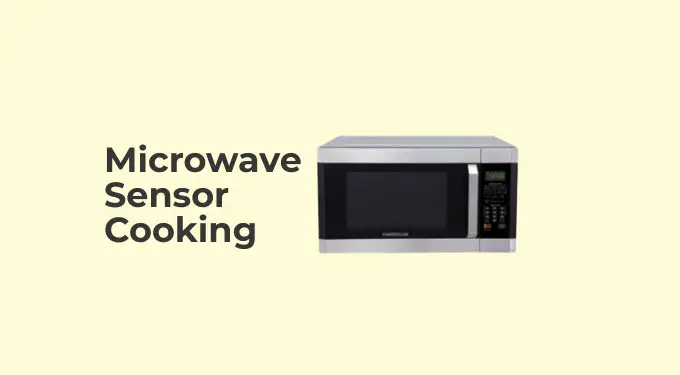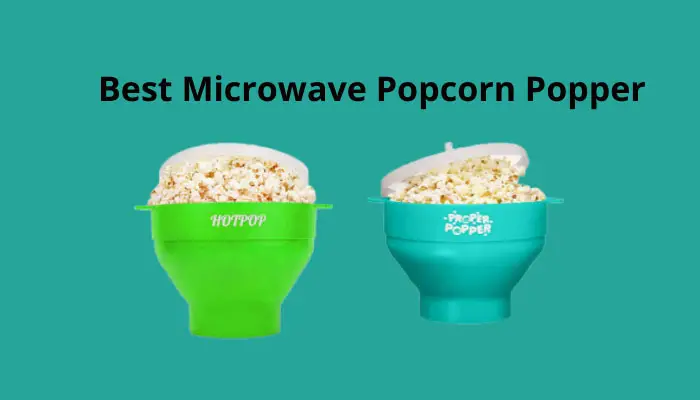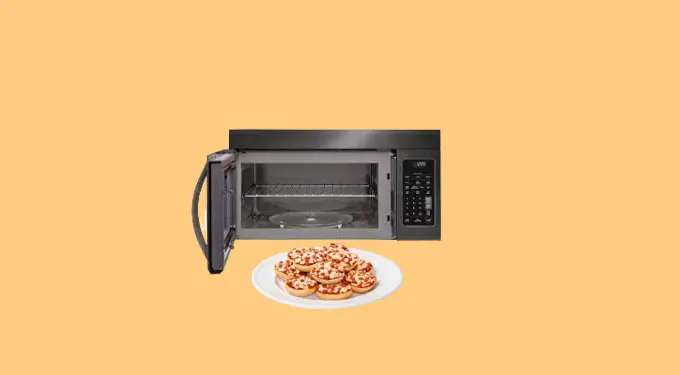Microwaves are essential appliances in a kitchen setup as they make cooking easier. Hidden behind some microwaves are sensors, that bring a smile to everyone’s face. But what exactly is a sensor cooking in a microwave? How does it work? Is sensor cooking worth it?
Well, microwave sensor cooking helps in detecting bacteria and humidity in foods and also determines when your food is ready. The sensors also monitor the temperature and steam your food emits to help determine how much water is remaining for the food to be ready.
In this article, we will enlighten you more on sensor cooking in the microwave.
What does sensor cooking mean in a microwave?
Sensor cooking in microwaves allows microwaves to monitor the moisture/water content in foods. The sensors also adjust the power level and the cooking time so you have the best dish. This technology is common in many countertop microwaves even though not in all.
The water content and temperature are the main determinants of the readiness of your food. the microwave eliminates water in the food as it cooks. The water in the food is stimulated and releases steam.
Even though it’s an effective method, it shouldn’t be relied upon entirely because foods have varying moisture content. for instance, if you place two potatoes with different moisture content in the microwave, they end up with different results.
Related Topic: Cook bagel bites in the microwave
How does microwave sensor cooking work?
Microwave ovens have different types of sensors but they all work the same. As the microwave warms food, the water in the food is energized, releasing humidity. The more it heats, the more humidity is released.
The sensors then calculate the moisture and temperature of the food so as to determine the amount of water that should keep heating and which should remain. A person chooses what food to be prepared so that the microwave realizes what food is being cooked. This prevents undercooking or overcooking the food.
Simply put, the microwave saves you time to keep checking food every now and then by sensing the amount of heat, water and humidity present in the food and adjusting the power level and the cooking time.
the major selling points of sensor cooking include reduced or eliminated cold spots, and reduced chances of undercooked or overcooked food which turns rubbery or dries out. You will also not need to keep checking the food, and thus won’t add these time gaps to the total cooking time.
What is a sensor reheat on a microwave
sensor reheat is simply a sensor cooking mode that’s intended for reheating food instead of cooking it. Just like sensor cooking, Sensor Reheat will use the moisture and temperature sensors inbuilt in the oven to automatically adjust the required cooking time and heat for the food or fluid that’s being reheated.
You can reheat foods such as casserole, soup/sauce, dinner plates, beverages, and pizza, all under their dedicated programs.
Is Microwave sensor cooking worth it?
Yes! microwave sensor cooking is worth it. The sensor gives you more advantages compared to cooking with normal microwaves. Some of the reasons why sensor cooking is worth it are:
- Your food is saved from moisture and humidity so you get the best results from them.
- You avoid bacterial contamination, humidity, and moisture in food.
- They come with a reheat option so you can cook food anytime.
- The quick one-time cooking advantage.
- It’s a safe cooking method.
- Lastly, it helps you set the correct power when confused about choosing the right one.
Sensor cooking is also the best in cooking foods that their doneness is judged by their internal temperature like large amounts of food and meats (even though microwaves aren’t the best in cooking such).
What you should know about sensor cooking and sensor modes in microwaves
although sensor cooking is designed to ease the cooking for you and make it much more efficient, you should understand a few things so you can get the best out of your microwave.
- Sensor cooking works similarly to ocean floor temperature detection: You got that right- by detecting humidity heat and moisture, sensor cooking alters heat and durations automatically throughout cooking.
- Sensor cooking is multipurpose: You not only benefit from actual cooking but also from reheating your foods better. Say goodbye to those cold spots.
- Sensor cooking is far from being foolproof: Sensor cooking works with the same technology used for detecting and recording seafloor temperature. When it comes to cooking delicate foods like frozen veggies, huge frozen food items, and others like delicate meats or chicken, you are better off with manually controlled high-capacity microwaves.
Also, dedicated functions like defrost are best left to the defrost programs, as opposed to trying sensor cooking mode.
Sensor cooking is not ideal for baking bread or other specialized functions required for heating meals containing many ingredients including frozen vegetables.
Fresh vegetables and chicken pieces benefit the most from open flames. This makes the sensor cooking function not a necessarily better alternative.
- Effectiveness doesn’t necessarily increase: Unlike solid foods that have a very low heat conductivity, liquids heat up more uniformly due to convection. This means the liquid will not heat in a better or shorter way in sensor cooking, as opposed to traditional nuking.
- You’ll the most with time: As you get started, you’ll have lots of questions, whose answers will get you closer to perfecting your sensor cooking. Get a menu guide to supercharge your learning curve.
- Not all microwave ovens are sensor-equipped: Countertop microwaves are the most popular. There are other higher-capacity types, like convection microwaves, built-in microwaves, and range microwaves, that are even more robust in terms of sensor cooking technology. Still, sensor cooking is more convenient on countertop microwaves.
Is sensor cooking the same as convection?
In sensor cooking, radiation waves are released and then reflected in the receiver. The detector identifies changes now and then and the waves are altered when foods are placed in the microwave.
The electromagnetic radiations used by the sensor measure the humidity and moisture that the food releases during cooking. As the food cooks, the humidity sensor estimates the amount of moisture in the oven and then determines the cooking process.
A convection microwave on the other hand uses technology where a fan circulates radiofrequency energy. Hot air is also released and it’s responsible for roasting, baking, and crisping your foods. There are also microwaves with auto-cook and sensor cooking. Such a convection microwave cooks food while regulating the cooking time for the tastiest meal.
Microwave sensor cooking safety precautions
As we’ve seen, the sensor cook feature is not foolproof, and a sensor cook microwave doesn’t do it all by itself. There are a few things you need to put in mind whenever buying countertop microwaves with a sensor cook option:
- Never put any stainless steel item in the oven or a food item with the metal: Stainless steel will arc when they come into contact with microwave radiation, causing damage to the unit. You can use aluminum foil instead.
- Do not run two consecutive instances of sensor cooking: If you notice your food didn’t get cooked through in the first run of sensor function microwave cooking, do not attempt to completely cook the dish by running another cycle. Instead, use the Time Cook feature until your food is ready.
- Use microwave-safe dishes and bowls: In addition to stainless steel, there are food-handling items that are unideal to nuke food in. These include plastics and metallic wire contort ties.
Video: How to set up a Microwave Sensor correctly
Wrap Up
Most microwaves, be it a range microwave oven, or just about any functional microwave, include a sensor mode to make things more automated. All of the precautions required in nuking food will still apply when sensing technology is involved.
If you are already bored of constantly checking your food in the oven, it’s time to upgrade and let the tech do more for you.



